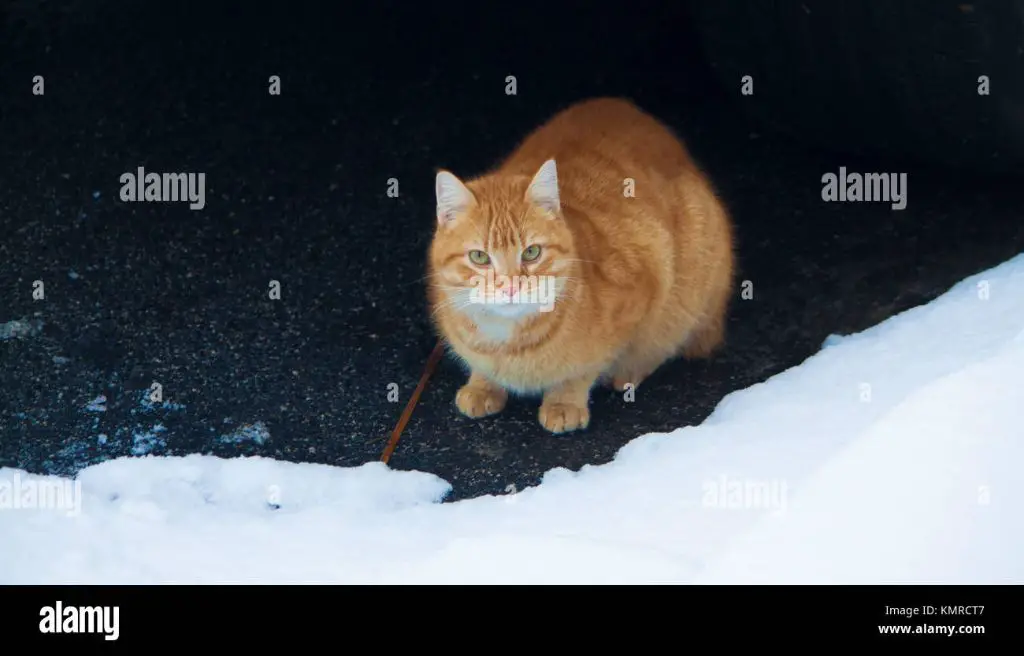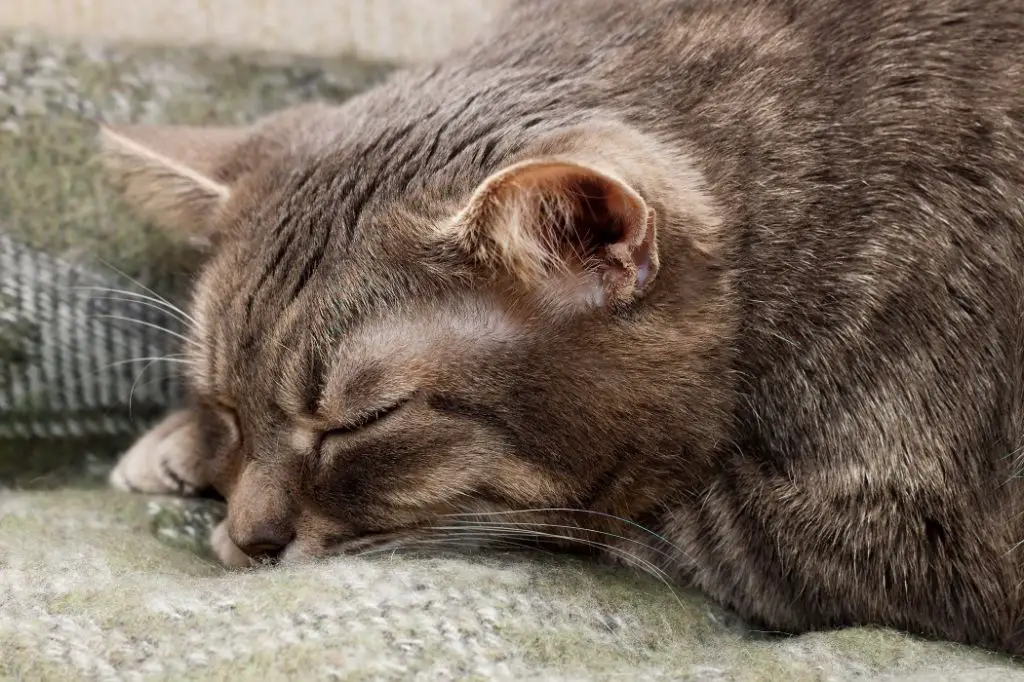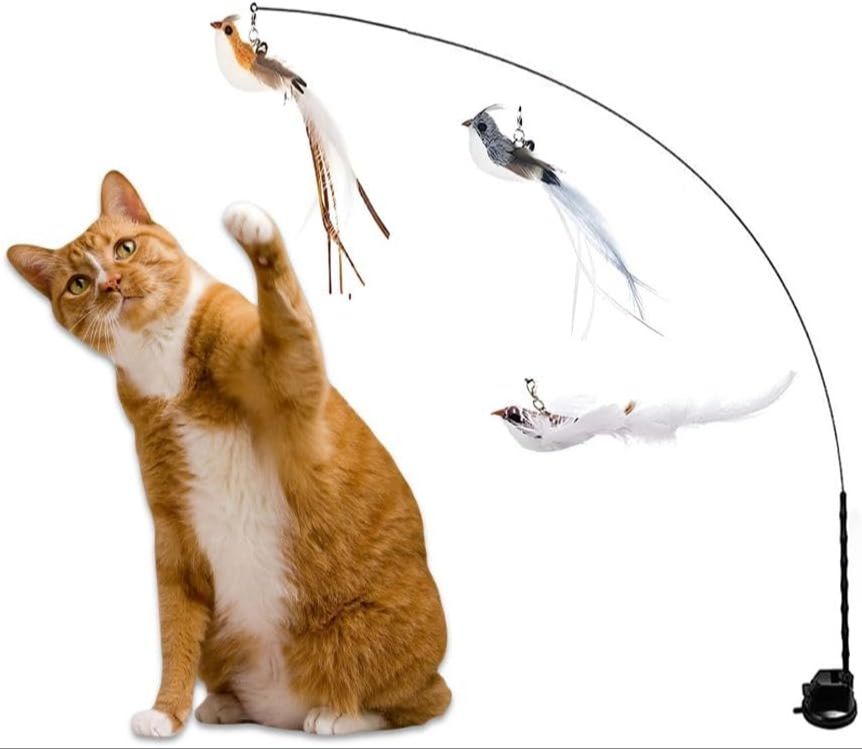With winter comes colder temperatures, snow and ice. The cold weather affects pets just as much as humans. While cats have a fur coat to help insulate them, they still feel the effects of frigid temperatures.
A common question cat owners ask is if cats get cold during the winter months. The short answer is yes. Cats are susceptible to the cold and can get hypothermia or frostbitten ears and paws if left exposed to freezing conditions for too long.
In this article, we will explore how cold affects cats and provide tips on keeping your feline friends warm and healthy through the winter.
Cats Have Fur Coats
Cats are naturally covered in a coat of thick fur that helps insulate them and keep them warm in cold weather (TipPaws, 2023). The hair follicles and fur structure create layers of air pockets that trap heat near the cat’s body. The innermost and shortest layer is a dense undercoat that keeps them warm. The longer outer layer of fur lies over the undercoat and protects from wind, rain, and snow (BasePaws, 2023). As temperatures drop in the winter, cats’ fur tends to thicken and become more full to provide extra insulation and warmth. The fur keeps their body heat contained close to their skin. However, the fur coat thickness and density can vary between breeds. Long-haired cats typically have the most fur insulation.
Some Breeds are More Cold-Tolerant
Certain cat breeds are better equipped to handle cold winter temperatures than others. For example, the Maine Coon originated in the cold New England region and has a thick, water-resistant coat that allows it to thrive in cold climates. Maine Coons have large, well-tufted paws that act like snowshoes to help them walk on snow. Their long, bushy tails can wrap around their bodies for additional warmth. Maine Coons tend to be larger cats, which gives them a lower surface area to body mass ratio, meaning they lose less body heat.
Other cold-tolerant breeds include the Siberian, Norwegian Forest Cat, Turkish Angora, and Russian Blue. These breeds all developed dense, water-repellent top coats and soft, downy undercoats to insulate them from frigid temperatures. Their sturdy builds, thicker fur, and innate adaptations make them well-equipped for winter.
Provide Warm Shelter
A warm shelter is crucial for outdoor cats surviving the winter cold. As the ASPCA notes, outdoor cats are at risk of frostbite and hypothermia when temperatures drop below freezing [1]. Providing an insulated, draft-free shelter can be a matter of life or death.
There are many options when it comes to constructing or purchasing winter cat shelters. An basic insulated plastic bin or styrofoam cooler with a small entrance hole can work well [2]. The shelter should be just large enough for the cat to turn around and lie down. Place straw, old towels or blankets inside for warmth. Elevate the shelter a few inches off the ground and ensure it is in a protected area out of the wind and precipitation.
For a more durable option, build an outdoor shelter out of wood, plastic or even corrugated metal. Be sure to elevate it and include thick insulation like straw inside. Wrap the shelter in waterproof material like vinyl or heavy plastic sheeting [3]. Place the opening away from the direction of prevailing winds.
Providing warm, dry shelter from the elements can help community and outdoor cats survive even the coldest winter weather.
Limit Time Outdoors
It’s important not to leave cats outdoors for extended periods of time in freezing temperatures. According to the Human Society, cats allowed to roam outdoors in winter should be brought inside periodically throughout the day so they can warm up. The cold temperatures, wind, snow, ice and moisture can be dangerous if a cat is left exposed for too long.

Cats’ extremities, such as their ears, nose, paws and tail can be especially susceptible to frostbite and hypothermia when left out in the freezing cold. The general recommendation is to limit a cat’s outdoor time to no more than 15-30 minutes when temperatures dip below freezing.
According to the Tractive blog, “An indoor cat that goes outdoors only occasionally won’t be able to handle below-freezing temperatures for more than a few minutes.” It’s best to keep a close eye on outdoor cats in winter and provide them access to warm shelter when needed.
While some cats may try to stay out longer on their own, it’s important for owners to monitor the situation and bring cats inside well before they get overly cold. Extended exposure can be life-threatening. Feral cat colonies also rely on having insulated shelters available to warm up in.
Watch for Hypothermia
Hypothermia occurs when a cat’s body temperature drops below the normal range of 100-102°F. Signs of hypothermia in cats include:
- Shivering
- Lethargy or weakness
- Slow heart rate
- Slow breathing rate
- Disorientation or unresponsiveness
- Lack of coordination
As a cat’s body temperature continues to fall, shivering will stop and the cat may collapse or become unconscious. Severe hypothermia can lead to coma and death if not treated quickly (Vetster).

Owners should monitor their cat’s behavior and look for signs of lethargy, shivering, or seeking warm places on cold days. If hypothermia is suspected, move the cat to a warm area and contact a veterinarian immediately.
Give Extra Calories
Cats need more calories in the winter to help maintain their body temperature and energy levels. According to a study, cats eat around 15% more food during the winter months compared to the summer. The drop in temperature causes cats to use more energy just to stay warm. Their metabolic rate increases in colder weather.
Indoor cats are just as affected by seasonal changes as outdoor cats when it comes to appetite and energy needs. The key is to provide extra food during the winter so your cat doesn’t lose weight. It’s advisable to feed cats a high-protein, high-calorie diet in winter with some wet food mixed in to increase palatability.
Monitor your cat’s body condition score and increase portions if needed so your cat maintains a healthy weight. Kittens and senior cats may need even more calories added to their meals in the colder months. Adding supplemental heating, shelter, and bedding can also help reduce calorie needs slightly. With a few adjustments, you can keep your cat properly nourished and content all winter.
Provide Warm Bedding
One of the best ways to help cats stay warm in the winter is to provide them with warm, cozy bedding. Heated cat beds are a great option, as they provide gentle warmth that keeps your kitty comfortable. According to welovecatsandkittens.com, the K&H Thermo Kitty Heated Cat Bed is an excellent choice, providing soothing warmth for cats of all sizes. The bed uses low wattage to maintain a temperature of around 102°F when in use.

If you’re looking for a self-warming option, the K&H Pet Bed Warmer is a good budget pick that reflects your cat’s own body heat back at them. It doesn’t require electricity and can be used in crates, carriers, and beds both indoors and outdoors (khpet.com). Thick, plush blankets in your cat’s bed are another easy way to provide insulation against the cold.
Heated cat beds allow your feline to stay warm and cozy no matter how chilly it gets outside. Providing a spot where they know they can escape the cold will help outdoor cats and other cold-sensitive breeds like sphynx cats thrive during winter.
Play Indoors
During the cold winter months, it’s best to encourage your cat to play indoors instead of letting them outside. Outdoor time should be limited when temperatures dip below freezing. According to this article, keeping your cat active and enriched inside will help prevent boredom and frustration.
There are many fun games and toys you can provide to keep your cat stimulated. Cat trees, scratching posts, and catnip are great for cats to climb, scratch, and roll around. Interactive toys like feather wands, laser pointers, and treat-dispensing puzzles engage your cat’s natural hunting instincts. Balls, tunnels, and tracks allow cats to bat, hide, and run around. Rotate toys to keep things interesting and try out new activities like treat training to mentally stimulate your cat.
Dedicate play sessions throughout the day to wear your cat out. This will satisfy their exercise needs and prevent them from begging to go outside in the cold. With enough physical and mental enrichment inside, your cat can stay happy, healthy, and warm all winter long.

Conclusion
In summary, cats can certainly get cold during the winter months if left outside for too long or without proper shelter and bedding. Their fur coats provide some insulation, but they are still susceptible to hypothermia, frostbite, and other cold-related illnesses. Keeping your cat indoors, providing extra blankets and warm spots to sleep, giving additional food for calories, and limiting time spent outdoors are all important ways to keep your feline friend comfortable when the weather turns cold.
Make sure to watch for signs your cat is too cold like shivering, folded ears, weakness, lethargy, and cold paws or nose. If you do need to take them outside briefly, have them wear a coat or sweater and check on them frequently. With some simple preparations and awareness, both you and kitty can stay cozy when Old Man Winter comes calling.

